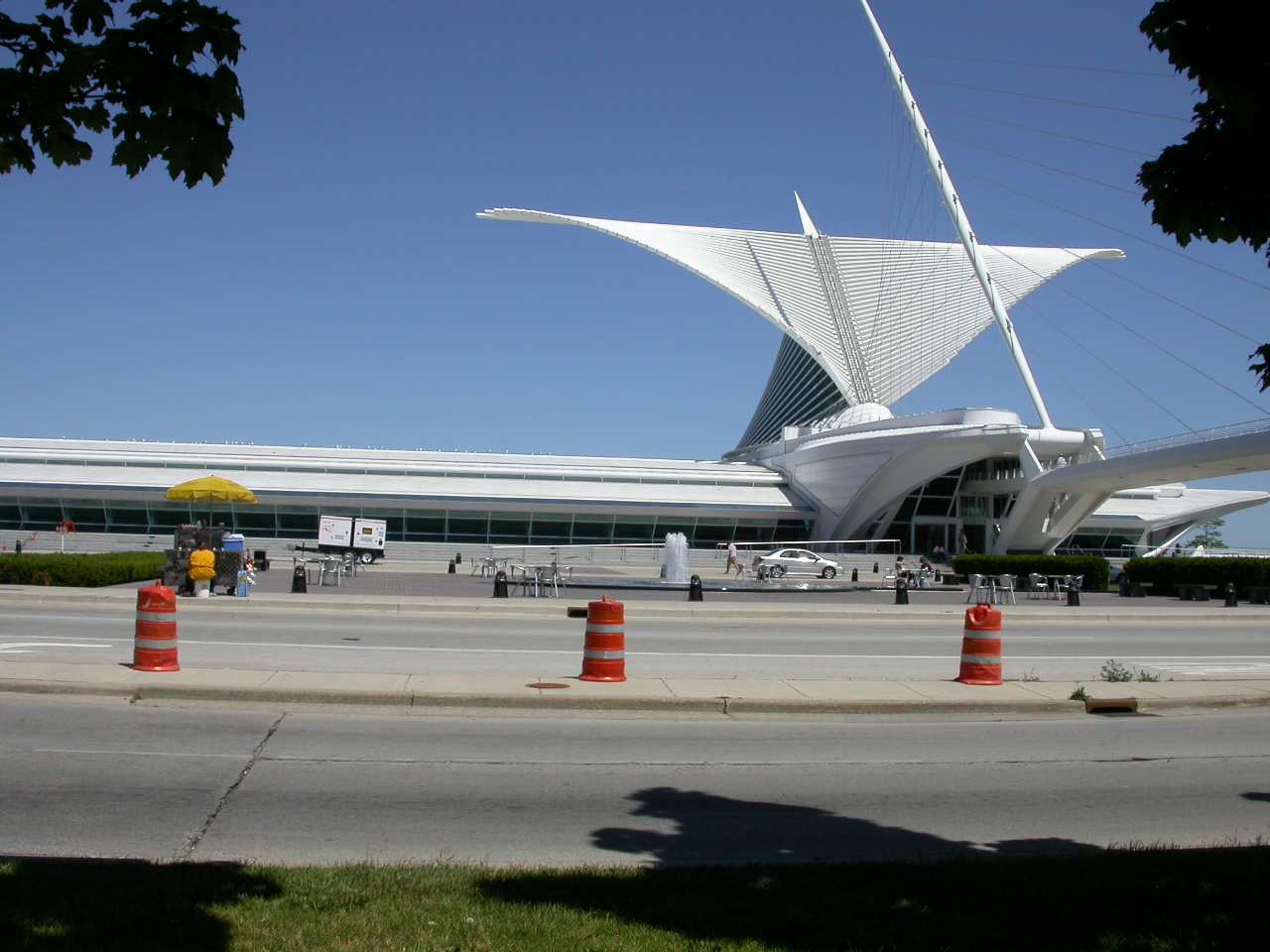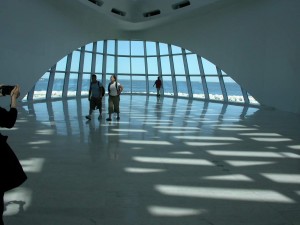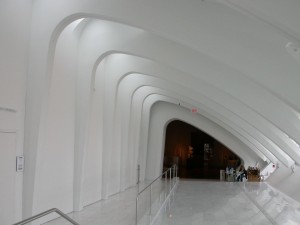photos by Cate Fallon and Roberta Fallon
I haven’t made it to Bilbao to see the Frank Gehry-designed Guggenheim, but last week I was in Milwaukee. My home town, known more for beer and bratwurst than for cutting edge architecture, now has a $122-million piece of trophy architecture designed by Spanish architect, Santiago Calatrava, and it’s ready to go mano-a-mano with the Gehry or any other contemporary boutique building you can name.

Calatrava’s building, called the Quadracci Pavilion, is an add-on to the Milwaukee Art Museum (see more images, including night-time shots, at their site). It seems more like a piece of functional sculpture than a building — beautiful, exotic and mysterious. It’s a great civic icon for the blue collar city on Lake Michigan. Without pandering or reaching too high, this building, which looks like a yacht or a bird or fish, refers to the city’s roots in the harbor and to its citizens’ aspirations for the future.
It’s a cunning building that’s spiritually uplifting — and weird, in a good way. The building has “wings” which open and shut several times a day (called a Burke Brise Soleil, the wings are a sunscreen of sorts and a moving sculpture). It’s also full of motifs that conjure up Neptune’s kingdom, like the windows that evoke the open maw of a shark.
Inside the building’s a dreamy mix of cathedral, Star Trek Voyager and belly of the whale. A big, open lobby area is where the space lifts off to another level, light spilling in, reflected in shimmery waves on the glossy floor.

There’s a gift shop in the addition, a restaurant, an auditorium and one interior gallery (with dark, glass doors to keep out the overwhelming natural light). Two walkways take you to the MAM’s collection (which includes a respectable number of contemporary work by Robert Gober, Willie Cole, Gregory Crewdson, Cornelia Parker and others.

Sitting in one of the walkways, Andrea Zittel’s “Wagon Stations,” 12 mod-pods for sleeping lined up in a row like a wagon train (image is detail of an open pod). They fit right in. Isolation chambers for sleepy voyagers (sleepy staff?), the only thing “off” was the build-up of dust on their brushed aluminum exterior — get a donor to Pledge quick.
The gallery has a design exhibit devoted to the works of Milwaukee industrial designer, Brooks Stevens (1911-1995), an innovator who, among other things, proposed turning the military jeep into a mass-market, family vehicle which he dubbed the “victory car.” (Jeep snapped up that idea fast.) Stevens also coined the phrase “planned obsolescence” though he never intended it to mean cheap, shoddy construction.
Is it worth the money?
There is that problem of the museum’s $25 million deficit (down from the scary $122 million it was before $98 was raised through corporate, foundation and private donations.) New MAM director David Gordon, a British import who knows his numbers, is working to turn that deficit around. (For more about Gordon and his mission, see June 10, 2003 Financial Times article by Caroline Daniel.)
I hereby recommend a trip to the Midwest. Of course a city is bigger than a building but if you’re looking for a reason to go, it’s a good one.










